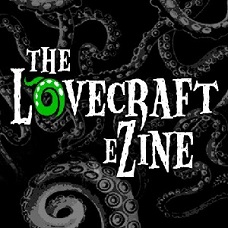 The Wide, Carnivorous Sky and Other Monstrous Geographies by John Langan
The Wide, Carnivorous Sky and Other Monstrous Geographies by John Langan
I loved The Wide, Carnivorous Sky and Other Monstrous Geographies. The book collects nine of John Langan’s short stories, some original and some reprinted. I first encountered Mr. Langan’s work in The Mammoth Book of Cthulhu, which I have been slowly devouring since I bought it back in 2016. While I was at the beach this past summer, I read his tale, Outside the House, Watching for the Crows, and I loved it as much as this collection. I marveled at his ability to use nostalgia in the service of telling a good horror story. About two weeks later, I encountered Mr. Langan in person.
Soon after my beach trip, I was lucky enough to present my academic paper, The Shadow Over Horror Tropes, at NecronomiCon 2019, in Providence, Rhode Island. It was there that I listened to Langan speak during the Outer Dark’s State of the Weird Podcast. Afterward, I ended up crossing his path a few times during the convention, but I didn’t realize he’d written Outside the House, Watching for the Crows until I got back from Providence. Somehow, my brain failed to make the connection that I’d read his work, even though I had my copy of The Mammoth Book of Cthulhu with me, and I saw his name tag multiple times. Suffice it to say; I’m still annoyed at myself for not getting his signature. Reading The Wide, Carnivorous Sky has only intensified my regret over missing the chance to pick Langan’s brain about his fantastic prose.
In my opinion, the tales in The Wide, Carnivorous Sky can be divided into two types. There are those where Langan experiments with the conventions of telling a horror story, and there are those that are more traditional. As a reader, I loved all these tales, but as a writer, I especially loved the avant-garde ones because they showed Langan’s narrative creativity.
I felt that four of the nine stories in this collection fell into the experimental category. The first was How the Day Runs Down, a tale in the form of a play concerning the zombie apocalypse and the afterlife. The mundanity of what happens after we die in this story was especially spooky to me. This is one I’d love to reread in print since I listened to The Wide, Carnivorous Sky on Audible. Immediately following How the Day Runs Down is Technicolor. This is a tale in the form of a lecture that concerns Poe’s exceptionally wonderful story, The Masque of the Red Death. Of course, writing this now, I can’t help but realize that How the Day Runs Down and Technicolor are both tales masquerading in other narrative formats.
The most avant-garde of these stories is The Revel. It’s a meta-tale told from a narrator dissecting the Werewolf story in progress by explaining all the elements, from the monster to the characters. It’s a unique take on the subgenre and another one I’d love to revisit in print form. The last tale to mix up narrative conventions is the final one in the collection, Mother of Stone. Langan uses the second person to tell a story about local lore and exorcisms. This one made my spine tingle quite a bit. As a writer thinking about craft, I wonder how much of that was due to hearing the narrator refer to “you” instead of a third person protagonist?
While I’ve devoted a little extra page space to the experimental tales, the five traditional tales are just as fun. The collection opens with Kids, a short and visceral story about a teacher dealing with, let’s say, unruly students. The collection’s namesake, The Wide, Carnivorous Sky, is a fun twist on vampire mythology. It also reminded me of the science fiction horror classic Predator, because it concerned a group of soldiers confronting an alien foe with military strategy and good old-fashioned moxie.
Possibly my favorite tale of the entire collection, City of the Dog is amazing. The story uses nostalgia in a similar way to Outside the House, Watching for the Crows. The major difference is that City of the Dog connects with H.P. Lovecraft’s mythos, specifically his famous tale, Pickman’s Model. Langan’s story is a masterclass on creating a believable character. The protagonist is extremely well developed, and I loved the haunting ending, which leaves the protagonist filled with fear and regret. I think this tale perfectly illustrates how vital a character’s regrets are to a good horror story.
Another excellent tale that deals with Lovecraft is The Shallows. This story explores what the world looks like after Cthulhu has risen. It’s effective in a similar way to City of the Dog, as regret is a core part of the tale again, but the tone is bleaker since the world has been wiped out. It’s full of the quiet moments of contemplation that I think good post-apocalyptic fiction requires. Lastly, there is June, 1987. Hitchhiking. Mr. Norris, a fictional account of an incident in the writer Laird Barron’s life (I just reviewed his exceptional collection, Occultation and Other Stories, last month). The story concerns a car designed to draw occult symbols using human blood to summon horrible monstrous entities. So, naturally, I loved everything about it.
If you like horror, weird fiction, or anything in between, you should read or listen to this collection. All the tales are unique and entertaining. Langan even mentions my favorite superhero team, the X-Men, in a few of his stories. I highly recommend checking out The Wide, Carnivorous Sky and Other Monstrous Geographies. And since I just listened to three short story collections in a row on audible, I think a return to novels is warranted. So, I may follow-up Langan with more Langan by reading his 2016 novel, The Fisherman. What better way to start 2020, then with a healthy dose of horror?









